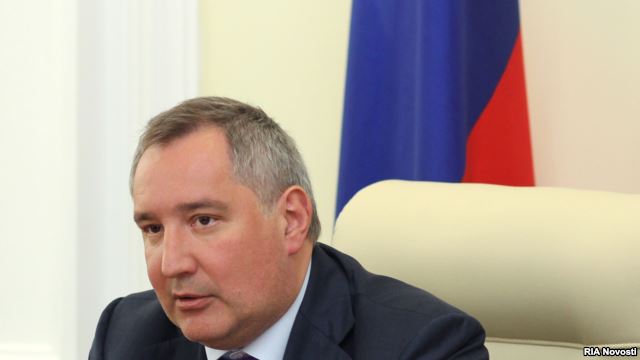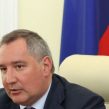
Moldova: Russia’s Next Target if the West Falters in Ukraine (Part Two)
Publication: Eurasia Daily Monitor Volume: 11 Issue: 98
By:

Russia’s annexation of Crimea from Ukraine in March was an overture to the broader “Novorossiya” project, announced by President Vladimir Putin on April 17. This covers eight Ukrainian provinces that Russia aims to carve out of Ukraine, whether through “federalization” or some form of Russian protectorate. If successful, this project could turn Moldova and Romania de facto into neighbors of Russia, hence frontline states. Romania’s president and government have concluded that Russia aims to return to the estuary of the Danube via Ukraine’s Odessa region, thus obtaining direct borders with Transnistria, with Moldova’s heartland and with Romania. In Bucharest on May 21, US Vice President Joseph Biden told Romania’s leaders, “Our countries stand together in supporting Moldova” (Agerpres, May 21).
Concurrently in Washington, Moldovan Liberal-Democrat Party leader Vlad Filat (prime minister, 2009–2013; now leading the main pro-Western party in the parliamentary election campaign) urged senior US government officials to support all countries in the region facing this new threat of Russian aggression. Countries situated beyond the eastern borders of the North Atlantic Treaty Organization (NATO) need a reliable security framework, even if not based on membership in an alliance or organization, Filat argued in Washington. He also underscored the importance of credible Western sanctions to prevent Russia from moving more boldly into Ukraine or Moldova (The Daily Beast, May 23; Unimedia, May 26).
Transnistria provides Russia with a potential lever of pressure on Moldova. The Kremlin’s current priorities in Moldova are: 1) to forestall the signing, ratification and implementation of the Moldova–European Union association agreement; and 2) to unseat Moldova’s pro-Europe coalition, shepherding a left-leaning Russophile alliance to power in the upcoming parliamentary elections (see Part One). Russia holds the Transnistria lever in reserve for now. Moscow is not about to “recognize” Transnistria’s secession from Moldova, nor to pursue a Crimea-type annexation of a territorial exclave. Risking additional Western economic sanctions would not be worth it for Russia at this time. Instead, Russia is laying the groundwork for influencing Moldova’s debate on EU association and the course of the electoral campaign.
If the elections produce a “multi-vector” government with pro-Russia elements, then Russia will launch another “federalization” attempt, using Transnistria to guarantee Russian influence on the rest of Moldova. If, however, the pro-Europe coalition drives the EU association process irreversibly forward and is re-elected in November, then Moscow would consider ways to retaliate against Chisinau via Transnistria. The Kremlin could abandon even minimal lip service to Moldova’s territorial integrity, discontinue the symbolic 5 + 2 negotiations, strengthen Russia’s civilian and military presence in this part of Moldova, and hypothetically provoke incidents on either bank of the Nistru River.
Russia proposes “federalization” for Ukraine and Moldova in parallel. The older proposal for Moldova is held in suspension, while that regarding Ukraine is operational since March under the threat of Donbas’s secession (see EDM, May 14). “Federalization” aims to empower Russia-oriented authorities in parts of either country, so as to block the policies of Western-oriented central governments in Kyiv or Chisinau. Both incumbent governments, therefore, deem “federalization” unacceptable. Russia seeks Western support to initiate negotiations toward Ukraine’s “federalization.” If such negotiations start over Ukraine, Russia will next push for a parallel process in Moldova.
Ukraine’s Odessa province (contiguous to Moldova/Transnistria and Romania, riparian to the Black Sea and the Danube) forms the strategic focus of Russia’s “Novorossiya” project. Russia will probably seek to open a military supply route, and possibly a civilian transit corridor, across the Odessa province to Transnistria. Having annexed Crimea, Russia may well attempt to overcome Transnistria’s exclave situation and connect with it directly by land. Much will depend on the political situation in this province and in Kyiv. Former Ukrainian governments had consistently turned down Russia’s requests to deliver military hardware to Transnistria via Ukrainian territory.
On May 22, US General Philip Breedlove, Supreme Allied Commander Europe, told media in Brussels that the chiefs of staff of NATO member countries had just discussed possible scenarios affecting Moldova and Transnistria in light of Russia’s military activities in the region. NATO, Breedlove said, was “concerned by some [unspecified] circumstances in Transnistria resembling earlier developments in some of Ukraine’s regions” (Interfax-Ukraine, May 22).
The Moldova-Ukraine border measures 1,220 kilometers in total; including 450 kilometers controlled de facto by Transnistria on the Moldovan side of the Moldova-Ukraine border. It is vital to Moldova that the Ukrainian government maintain effective control on its side of that border. This would help shield Moldova from Russian paramilitary infiltration by proxy, as occurred in Donbas, in the event that Russia considers such a scenario for Moldova.
Meanwhile, Ukraine is itself at risk of ending up with a Transnistria-type situation in Donbas, if pro-Russia forces connect their scattered positions into a compact territorial base. Moscow may also decide to push its Novorossiya project aggressively on the political-diplomatic level. This would bring a second round of destabilization to the region (after the first one in March) and initiate a “federalization” process in Ukraine. If such circumstances eventuate in Ukraine, the Kremlin may feel emboldened to destabilize Moldova next.




